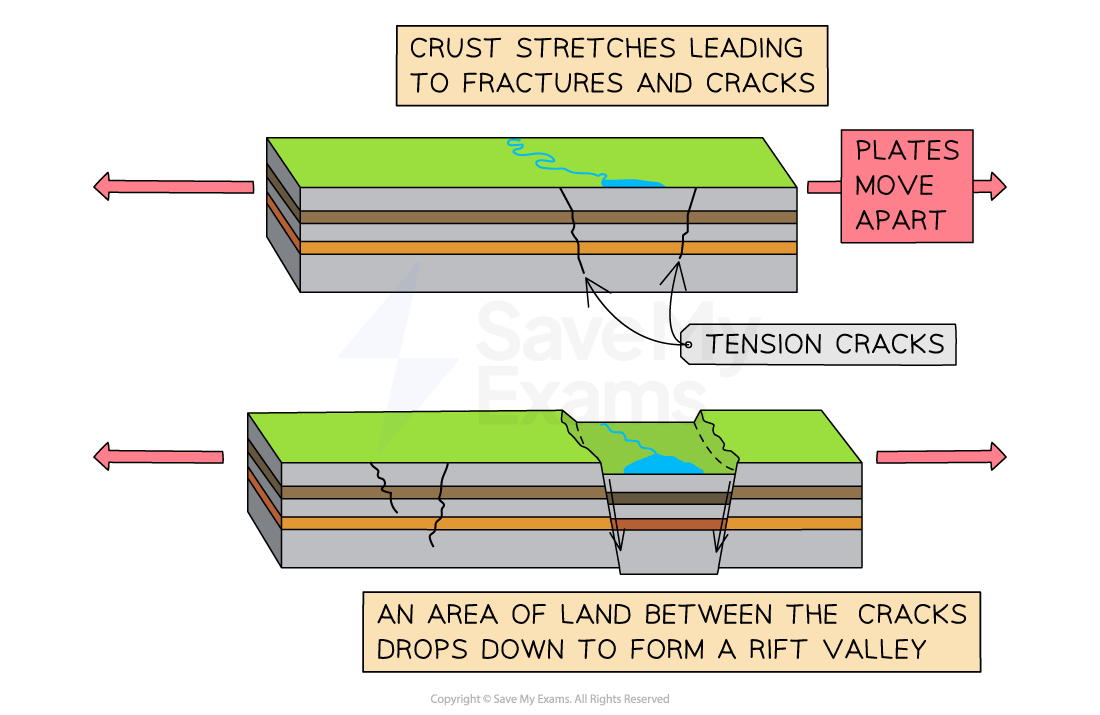Constructive Plate Margins
Types of Plate Boundary
- At each plate boundary, different processes take place and different landforms are found
- There are three main types of plate boundary:
- Constructive (divergent) - plates move apart or diverge
- Destructive (convergent) - plates move together or converge
- Conservative (transform) - plates sliding past each other

Types of plate boundary
- At a constructive (divergent) boundary the plates are moving apart
- Both volcanic eruptions and earthquakes can occur at this type of plate boundary

Constructive plate boundary
- Constructive margins create two different landforms:
- An ocean ridge forms when the diverging plates are under the ocean
- As the plates move apart, magma rises up to fill the gap and this accumulates over time to become taller and wider
- The Mid Atlantic Ridge is an example of an ocean ridge
- A rift valley forms when the diverging plates are beneath the land
- As the plates move apart, the crust stretches and fractures
- Areas of crust drop down between faults to create a valley
- The East African Rift Valley is an example of a rift valley

Formation of a rift valley




